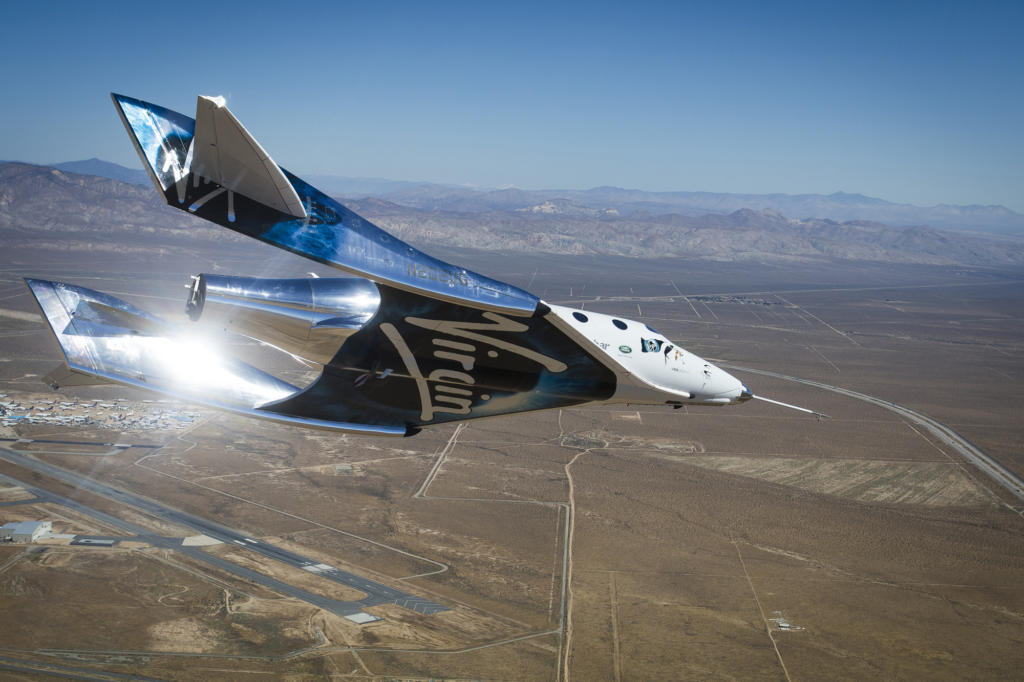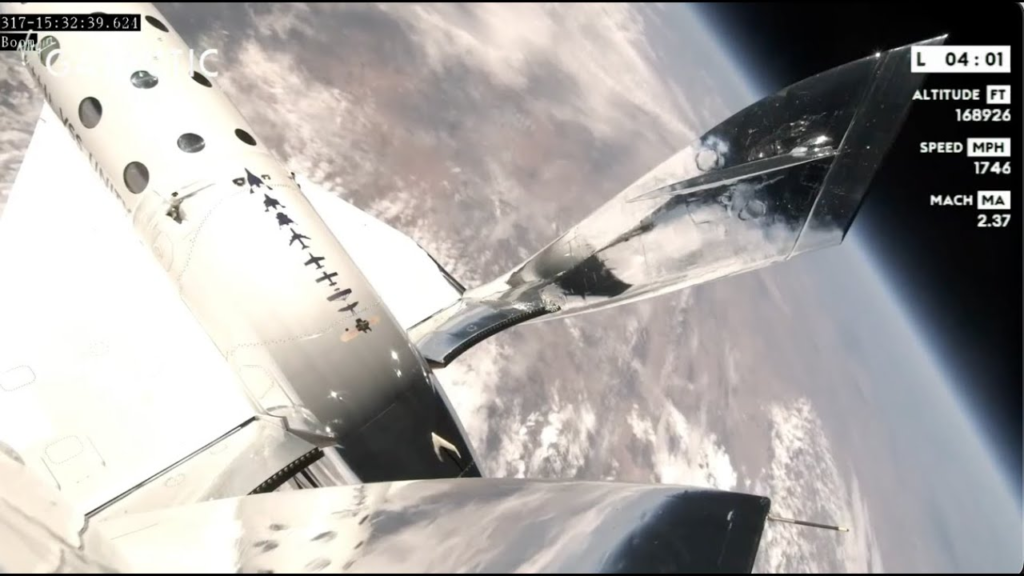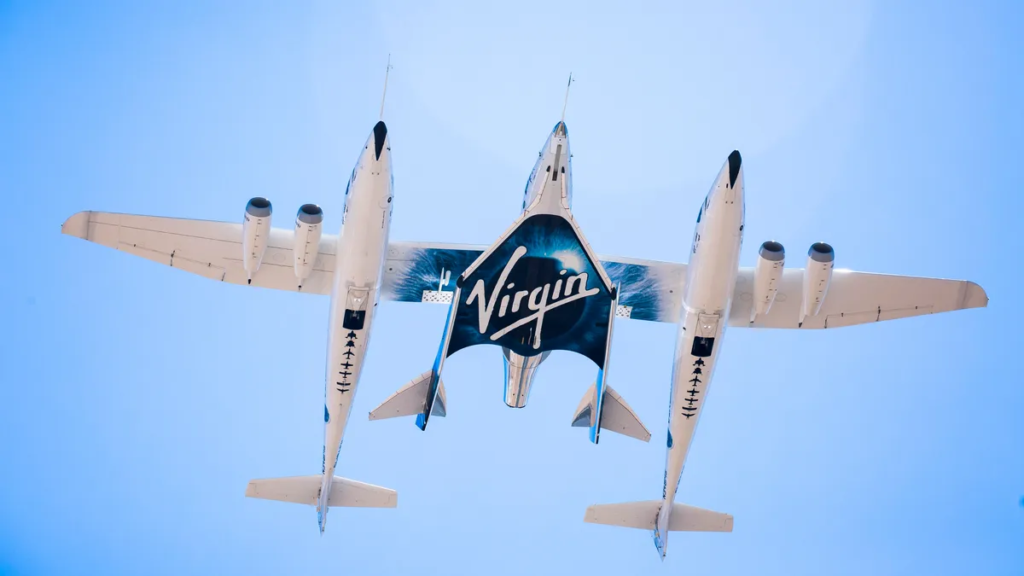
Virgin Galactic Just Launched Its First Commercial Mission
For the past few decades, Virgin Galactic has been developing and testing its SpaceShipTwo launch platform. In this 20-year period quite a few issues arose causing continuous delays to a flight that was intended to happen years ago. While the journey to the first commercial mission has been very long, they just successfully completed it earlier this morning.
Here they first flew before launching to suborbital space with 4 crew members on board. This launch is a big deal for the company and will likely mark the start of consistent commercial flights with this vehicle. While on the edge of space, the crew planned to conduct 13 experiments during the mission, ranging from biomedical data collection to microgravity studies of fluid mechanics and combustion.
With Virgin Orbit filing for bankruptcy, this success was a much-needed win for the company to try and keep up operations and continue launching. Here I will go more in-depth into this morning’s mission, why the development of this rocket took so long, what to expect in the coming months, and more.
First Commercial Mission

The flight lifted off from Spaceport America in New Mexico at 10:30 a.m. ET. Before the spacecraft came into play, the large mothership needed to complete its job first. The mothership is a special airplane built as the carrier and launch-platform for the spacecraft SpaceShipTwo and the uncrewed launch vehicle LauncherOne. It’s a large fixed-wing aircraft with two hulls linked together by a central wing. The center of the wing acts as the point of connection to the spaceship, supplying power, communications, heat and cooling.
Once Unity was dropped from the mothership aircraft at the proper altitude, it fired its hybrid rocket motor for approximately 60 seconds. It reached a peak altitude of 85. 1 kilometers where it floated for a few minutes before gliding to a runway landing at the spaceport at 11:43 a.m. Eastern. Around its peak altitude, the crew members had time to get out of their seats and move around before they began to return. Before reentry, the pilots fold the spaceship in half so it behaves like a capsule upon re-entry, spreading friction heat across the underside of the vehicle and enabling it to reorientate itself.
The Galactic 01 mission was a research flight for the Italian Air Force and Italy’s National Research Council. All the way back in late 2019 Virgin Galactic and the Italian Air Force signed the contract for the flight, agreeing to fly three Italian payload specialists on a dedicated research flight. “What a beautiful landing and a perfect way to complete our first commercial flight and our first dedicated science mission. Congratulations to everyone on board,” Virgin Galactic’s Sirisha Bandla said upon touchdown.
Virgin Galactics goal is to increase the launch cadence of these missions and keep flying as regularly as possible. While this is an important step, that process is much easier said than done. Even though both the mothership and Unity spacecraft are reusable and land back on the runway intact, there is a decent amount of refurbishment work necessary. This especially is the case when flying humans apart of commercial missions because of all the extra checks and safety procedures needed. Recently for example we saw Blue Origins New Shepard which had flown over 20 missions without an issue abort during the NS-23 launch. While there was no crew aboard it stresses the importance of flight safety and refurbishing rockets.
As far as the future, further spaceports are planned in Abu Dhabi and elsewhere, with the intention that the spaceline will have a worldwide availability and commodity. In relation to hardware, future testing will see SpaceShipTwo powered by a polyamide grain powered motor. As of July 2021 the maximum height reached has been 89.9 km. With this mission complete, the company now has a lot of work ahead of it.
Long Development

Nearly 20 years ago in 2004, Virgin Galatic was founded. Despite this, Virgin Galactic’s maiden spaceflight occurred in 2018 with its VSS Unity spaceship. Branson had originally hoped to see a maiden spaceflight by 2010, but the date was delayed for many years. In 2009, SpaceShipTwo was unveiled at the Mojave Spaceport. Branson told the 300 people attending, each of whom had booked rides at $200,000 each, that flights would begin “in 2011.” However, in April 2011, Branson announced further delays, saying “I hope 18 months from now, we’ll be sitting in our spaceship and heading off into space.” By February 2012, SpaceShipTwo had completed 15 test flights attached to White Knight Two and an additional 16 glide tests, the last of which took place in September 2011.
A rocket-powered test flight of SpaceShipTwo took place on 29 April 2013, with an engine burn of 16 seconds duration. The brief flight began at an altitude of 47,000 feet and reached a maximum altitude of 55,000 feet. While the SS2 achieved a speed of Mach 1.2 (920 mph), this was less than half the 2,000 mph speed predicted by Richard Branson. SpaceShipTwo’s second supersonic flight achieved a speed of 1,100 mph for 20 seconds; while this was an improvement, it fell far short of the 2,500 mph for 70 seconds required to carry six passengers into space. However, Branson still announced his spaceship would be capable of “launching 100 satellites every day.”
In February 2014, cracks in WhiteKnightTwo, where the spars connect with the fuselage, were discovered during an inspection conducted after Virgin Galactic took possession of the aircraft from builder Scaled Composites. Months later, Richard Branson described the intended date for the first commercial flight as February or March 2015; by the time of this announcement, a new plastic-based fuel had yet to be ignited in-flight. By September 2014, the three test flights of the SS2 had only reached an altitude of around 71,000 ft, approximately 13 miles; in order to receive a Federal Aviation Administration licence to carry passengers, the craft needs to complete test missions at full speed and 62-mile height. Following the announcement of further delays, reports came out that Branson faced backlash from those who had booked flights with Virgin Galactic, with the company having received $80 million in fares and deposits. Tom Bower was quoted saying, “They spent 10 years trying to perfect one engine and failed. They are now trying to use a different engine and get into space in six months. It’s just not feasible.”
In late 2014, the fourth rocket-powered test flight of the company’s first SpaceShipTwo craft, VSS Enterprise, ended in disaster, as it broke apart in mid-air, with the debris falling into the Mojave desert in California, shortly after being released from the mothership. Initial reports attributed the loss to an unidentified “in-flight anomaly”. This incident claimed the life of one of the two pilots. The flight was the first test of SpaceShipTwo with new plastic-based fuel, replacing the original—a rubber-based solid fuel that had not met expectations. Initial investigations found that the engine and propellant tanks were intact, showing that there had not been a fuel explosion. Telemetry data and cockpit video showed that instead, the air braking system appeared to have deployed incorrectly and too early, for unknown reasons, and that the craft had violently broken apart in mid-air seconds later. At a hearing in Washington, the NTSB cited inadequate design safeguards, poor pilot training, lack of rigorous FAA oversight, and a potentially anxious co-pilot without recent flight experience as important factors in the 2014 crash.
Following the crash of VSS Enterprise, the replacement SpaceShipTwo named VSS Unity was rolled out in 2016. For the next few years, the company would continue testing and trying to improve this system. By July 2018, Unity had gone considerably higher and faster in its testing program than its predecessor.
In late 2018, VSS Unity achieved the project’s first suborbital space flight, VSS Unity VP-03, with two pilots, reaching an altitude of 82.7 kilometers (51.4 mi), and officially entering outer space by U.S. standards. In February 2019, the project carried three people, including a passenger, on VSS Unity VF-01, with a member of the team floating within the cabin during a spaceflight that reached 89.9 kilometers (55.9 mi).
Finally, last year, Virgin Galactic announced that it opened ticket sales to the public. The price of a reservation is $450,000. The company had sold tickets before February 2022 to clients that had paid deposits earlier or otherwise “were on a list”; as of November 2021 the company had about 700 customers (tickets sold). The company aims to have about 3 launches per month sometime in 2023. As partially mentioned prior, a spin-off company, Virgin Orbit, used the same launch approach to achieve orbital launch, but was shut down in May 2023. Now with Galactic 01 complete, the company said that its plan is to launch private astronaut missions on a monthly cadence, serving a backlog of about 800 people who have signed up to date. The first of those, Galactic 02, is scheduled for early August. From now on we may see much more of these launches with crew.
Conclusion
Virgin Galactic just launched its first commercial mission and it was a success. While there have been a long list of hurdles between the start of the company and now, they are trying to provide a very unique space service. We will have to wait and see how it progresses and the impact it has on the space industry.
